We got up early in Koh Rong, so we could catch the first ferry back to the mainland in case of bad weather later in the day. From there, we just had 6 hours to hang out in the stifling heat, followed by a taxi to the airport, flight to Siem Reap, red-eye to Shanghai, and connection to Beijing. We were due to arrive at our destination around 8am, but things quickly went awry as Sarah had a bit of a stomach bug, our red-eye was delayed, and we missed our Shanghai connection (our first missed flight of the trip!).
The missed connection cost us a few hours, but we eventually arrived at the Beijing airport and caught a taxi. The driver spoke almost no English, but we were prepared with Chinese directions from our Airbnb host (the only address she provided, which we couldn’t read). I guess he couldn’t read them either, since after awhile he started yelling questions to nearby pedestrians and driving around in circles — but after calling our host three or four times, we finally got into our place.
Success, and time for some much-needed rest!? So we thought, until we pulled up our GPS. We were actually several miles from where the apartment was supposed to be according to Airbnb. Three hours and five Skype calls later, Airbnb finally agreed to offer a refund, and we took off for a more centrally located hotel.
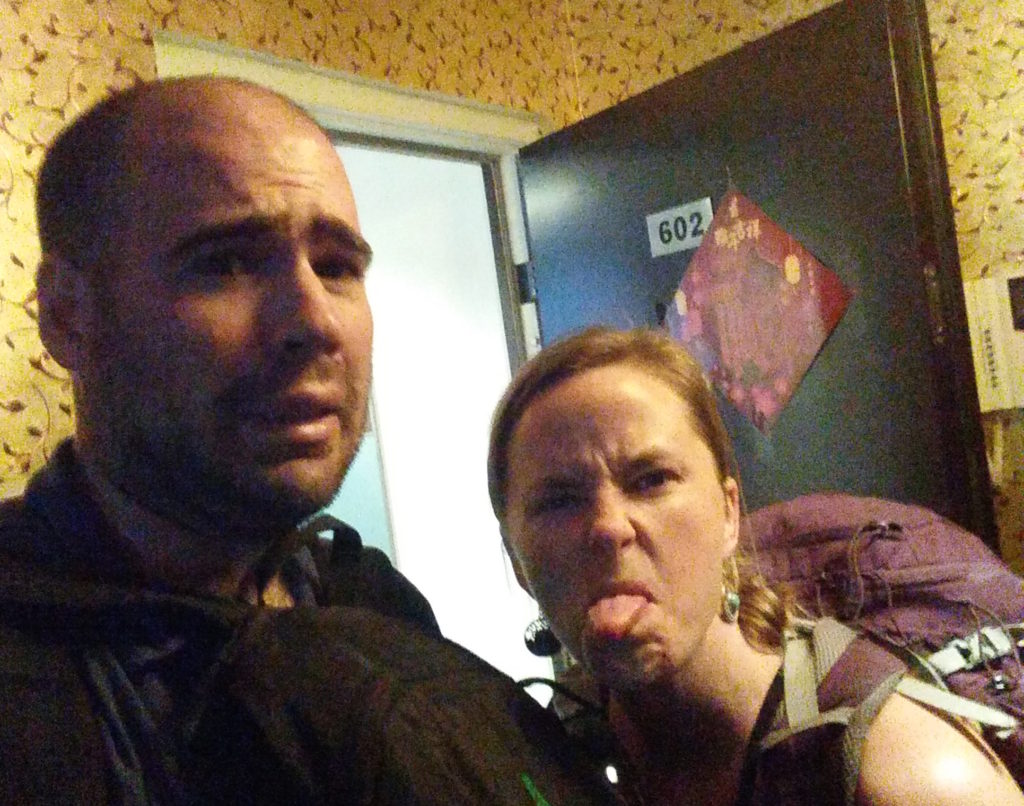
Two Uber rides later (the app doesn’t accept English destinations — likely due to the Google-blocking Great Firewall of China, and the drivers couldn’t speak English or read maps), we finally headed up the elevator to our room for the week.
On the way up to the eighth floor, we registered tired amusement at the elevator buttons: in Mandarin the number four sounds very similar to word for “death” and is considered unlucky, whereas eight sounds like “wealth” and is lucky. This is why most hotels don’t have a fourth floor but people pay a premium for phone number with lots of 8s. We dropped our stuff, scrounged up the only available provisions nearby (24-hour McDonald’s burgers and 7-11 Doritos), and tried to finally relax over Game of Thrones nearly 40 hours after leaving our last hotel.

Our main plan in Beijing was to catch up on work, between our visits with Becca in Cambodia and upcoming rendezvous with Brendan and Amanda in Shanghai. On our mostly brief expeditions out of the hotel, we learned a lot of unexpected and interesting things about China. First, Sarah learned that she actually liked Chinese food! Maybe the slim pickings from her upbringing in Northern Minnesota had left her prejudiced against it.
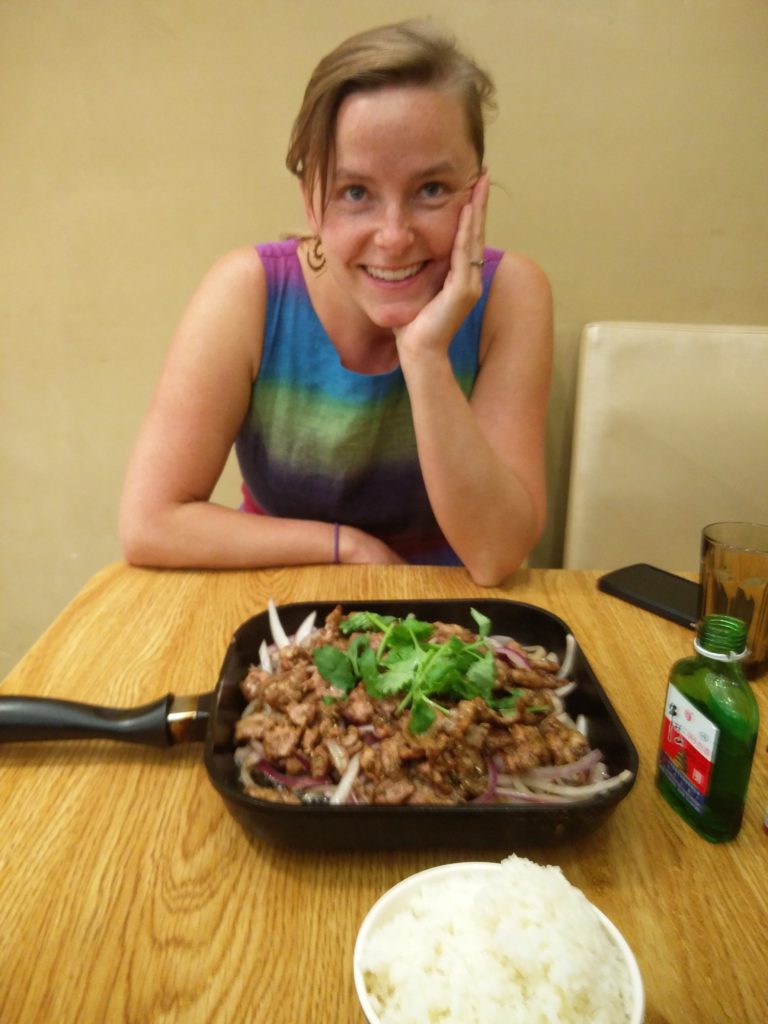
While she loved all the restaurant food, she nearly idolized this “Ethnic Mongol Yogurt” available at every 7-11 in Beijing.
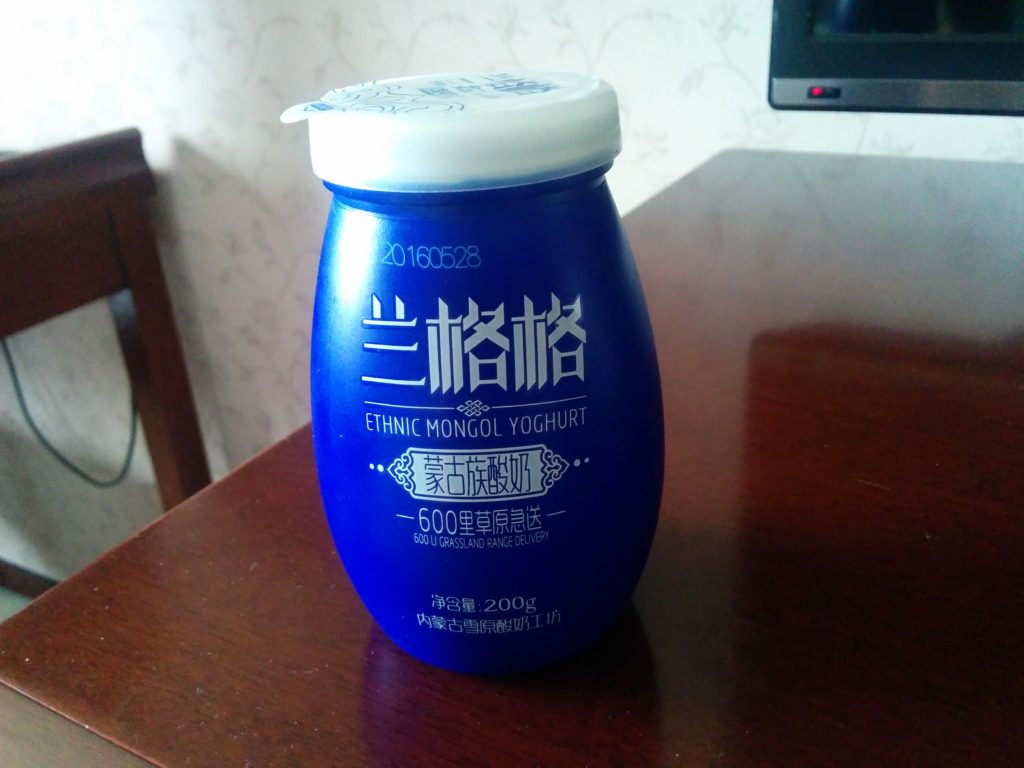
Not all Chinese cuisine passed the test, however: this Durian nearly didn’t stay down,

and Sarah remained somewhat ambivalent about the meat-heavy Hot Pot
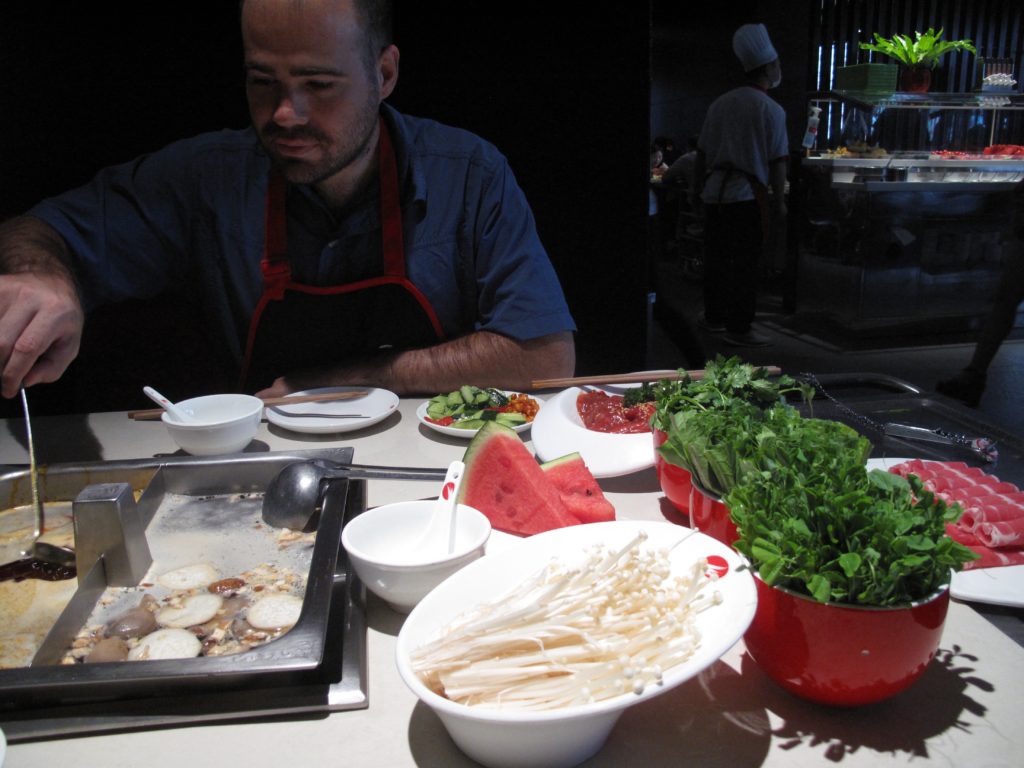
and Peking Duck (where we treated ourselves for Jason’s birthday).
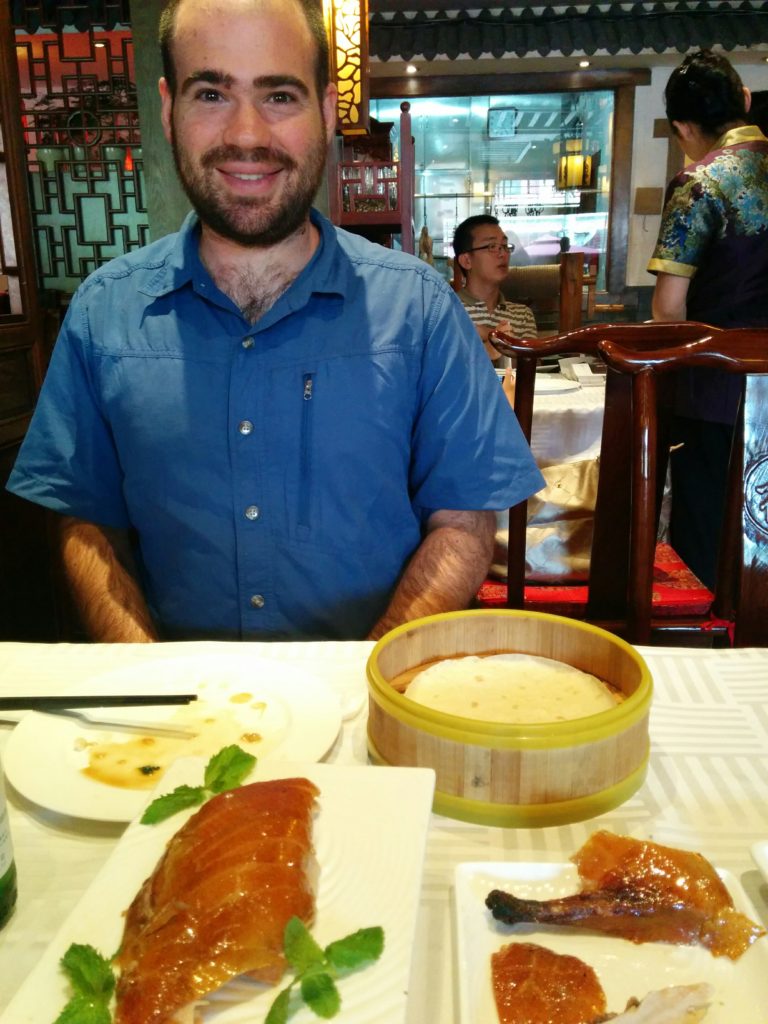
She did thoroughly enjoy the abundance of mistranslations, however.

We were also surprised by various other aspects of Chinese culture in Beijing.
The most challenging thing was that most people didn’t speak any English; something we had expected but found not to be true in many other countries like Ethiopia and India, and thus we’d grown complacent. While this made many normally easy things difficult, and Google Translate (made possible via a VPN) nearly indispensable, it was also a great opportunity for amusement — since at our count, often-hilarious Engrish outnumbered Chinese on t-shirts about 100 to one — and many couples even wore shirts with identical or complimentary slogans and styles.
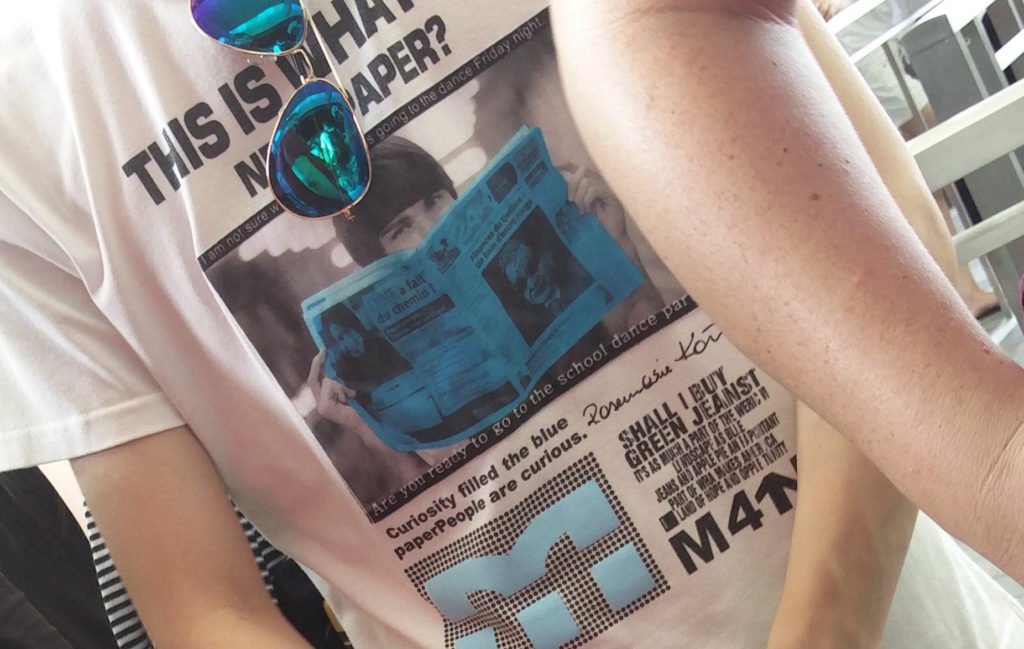
We had also expected China to be a constant shoving match — based on various experiences in Asia where (presumed) Chinese tourists jumped past long lines right to the counter — but were pleasantly surprised to find people in Beijing were generally very courteous and nice.
Some other unexpected things we saw (which were different from elsewhere in Asia): adult women holding hands, overweight people, and large groups practicing dance moves in the streets after dark (possibly in preparation for the upcoming Dragon Boat Festival).
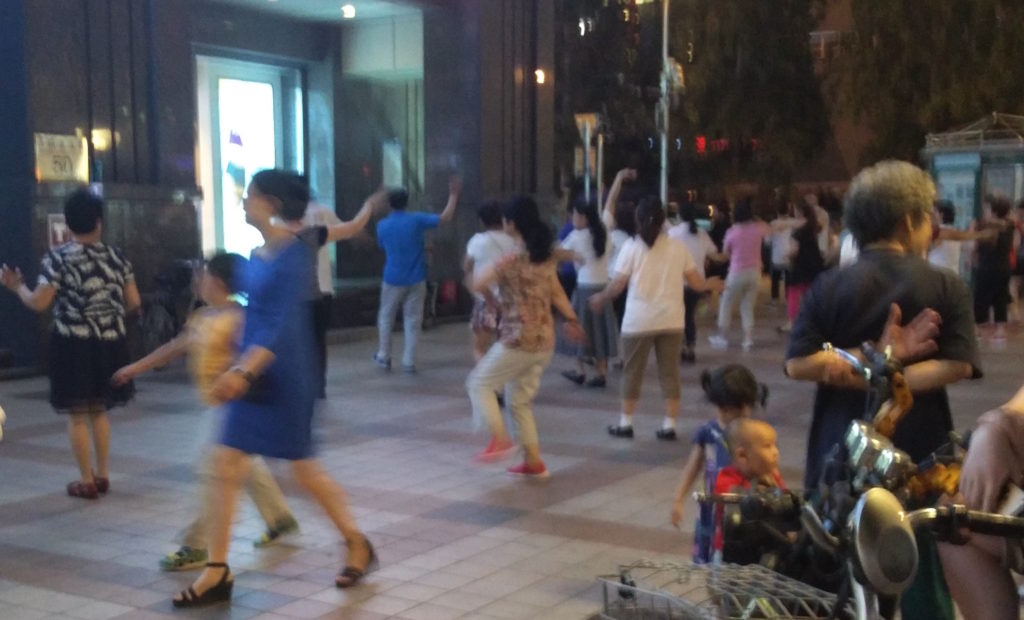
Given all that we know about China and climate change, the strong environmental message (at least where the public could see it) was unexpected and welcome. Every single public trash we saw in all of China had a recycling section (and often a small battery drop as well),
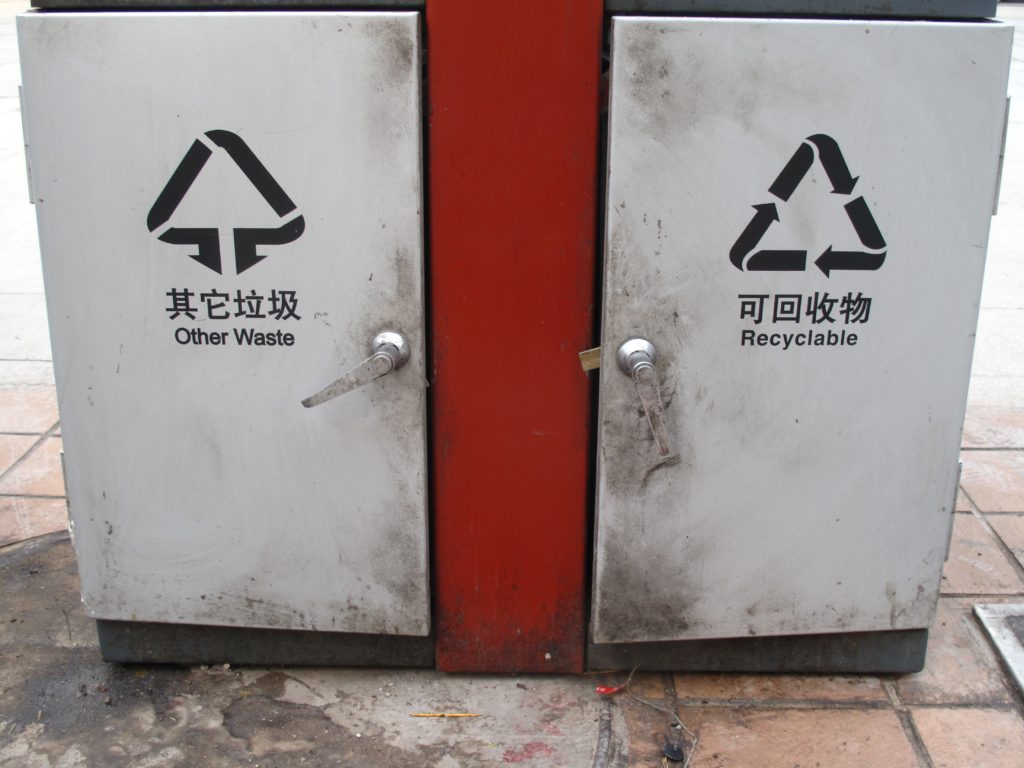
and electric scooters were by far the most popular mode of transportation.
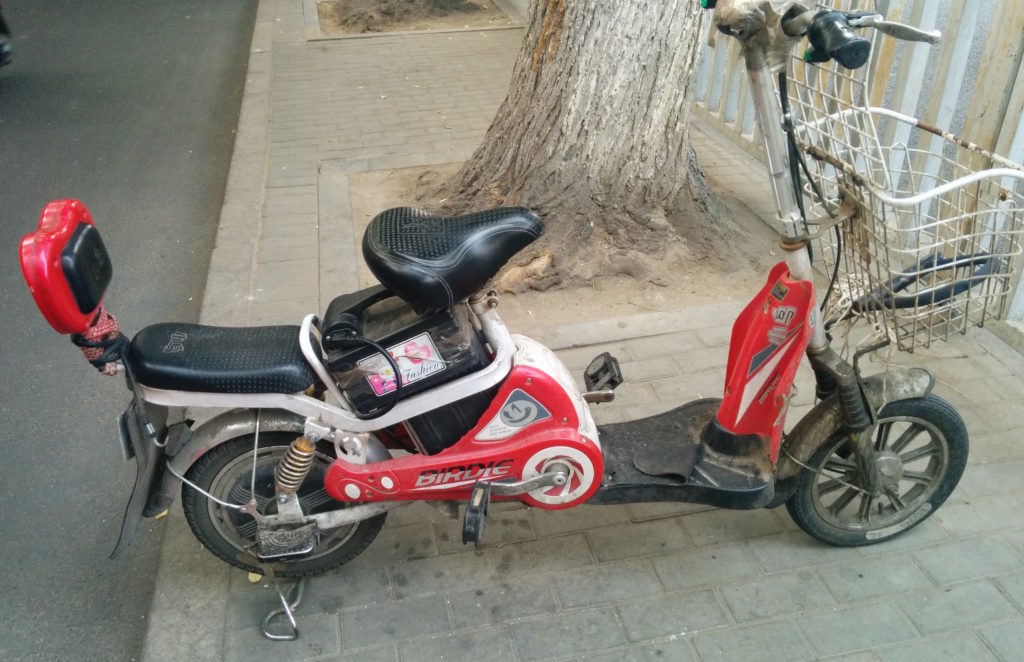
But the scooters still didn’t seem to quell the city’s poor air quality. 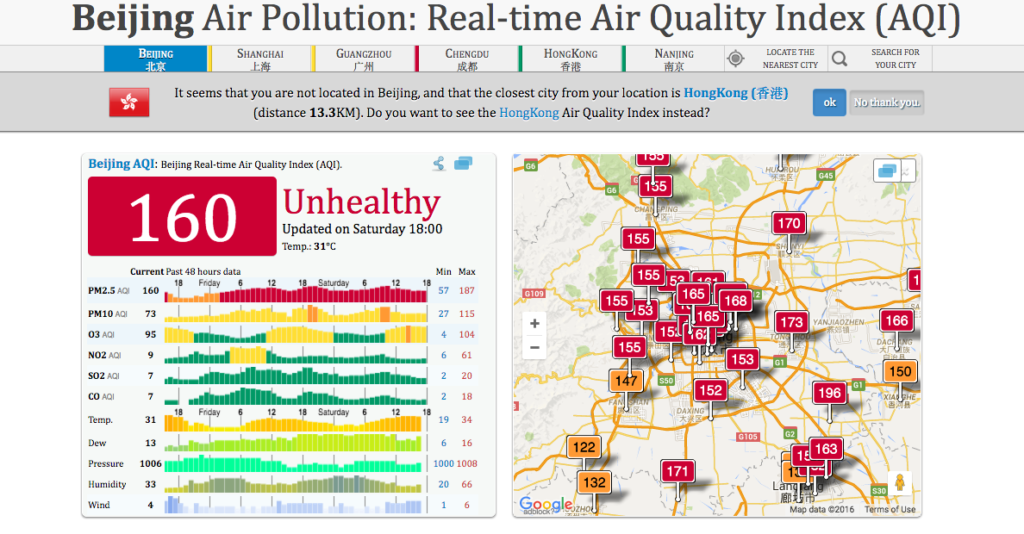
Whether the predominance of scooters was due to regulation, taxation, or their apparent invulnerability to traffic laws (including red lights and driving at high speed, silently, down the sidewalk), we’re not sure. Electric scooters aside, traffic in Beijing was surprisingly orderly, with the overall infrastructure feeling more like home than anywhere else we’d been — leading to a false sense of security that almost got us run over when we’d forget that turning cars at traffic lights cared nothing for pedestrian right-of-way.
Our first big sightseeing expedition in China was, predictably, to the Great Wall. We were headed to the nearest section, called Badaling, and when we arrived at the train station about 40 minutes early, the “line” — a roughly 10-foot-wide corridor formed by seats and railings — was already about 30 feet long. We stood in back, and quickly found ourselves pressed up against people on all sides as the people behind us pushed forward, while others climbed over the chairs to advance their position. It seems there really is no such thing as personal space in China.
When we could hardly take it anymore, the door to the train opened and it was like the starting gun of a marathon, as everyone from children to aging grandparents sprinted down the platform to the train to try to snag seats for the journey of roughly an hour. We suspect someone parks the train far away just to enjoy the show.
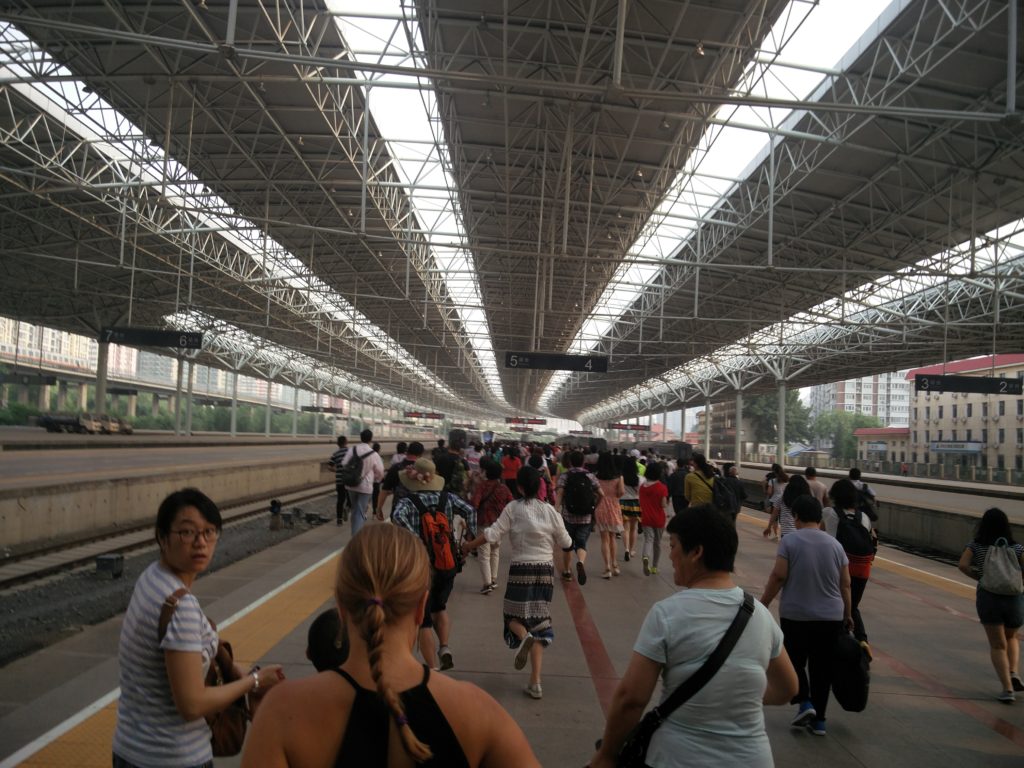
Before long, we had arrived and climbed the side of the wall opposite the cable car and toboggan, which was a bit steep and strenuous in places but far less crowded. We were rewarded with beautiful vistas of the wall and surrounding countryside.
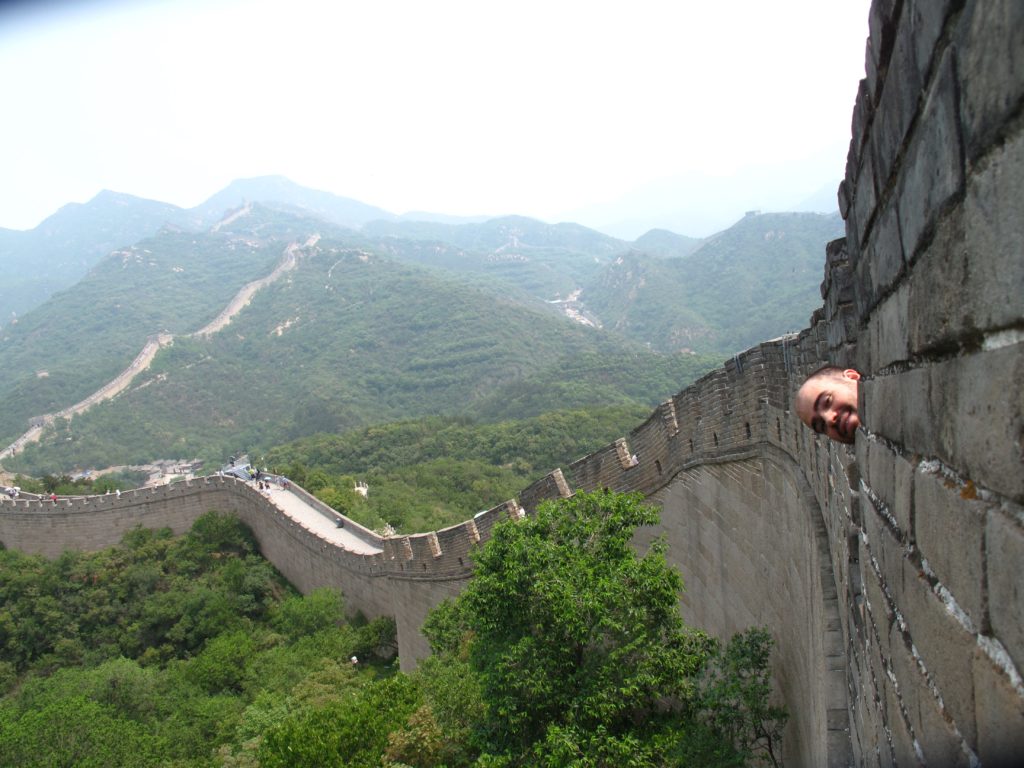
Jason also really enjoyed the Chinese graffiti carved into many of the bricks.

(Admittedly, it’s probably much less romantic if you can actually read what it says).
The train home was much more relaxing than the ride in, and on the way home we decided to stop by the “Forbidden City“, an extravagant demonstration of ancient Chinese architecture, with over 8,000 rooms elegantly designed and painted in red and yellow. The “palace city” was home to 24 emperors of China, and ordinary people were forbidden entry. True to its name, we were turned away — apparently it closes early.
A few days later we made another attempt, with a stop at Tiananmen Square on the way.
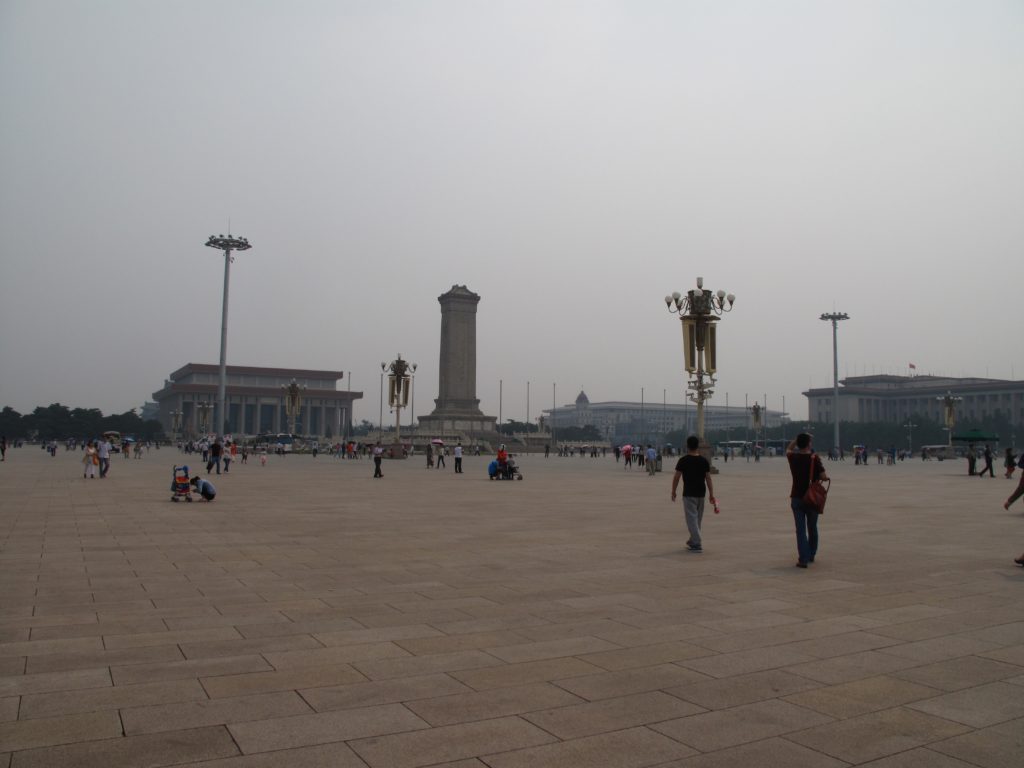
Of course, Tiananmen square is famous in the West for being the home of the 1989 protests and subsequent massacre. Perhaps the most interesting thing about it is the degree to which the Chinese government has managed to hide this history from its own citizens — search results in China censor mentions of the event, and most Chinese citizens born after 1980 have no knowledge of it or recognition of the iconic “Tank Man” photo. Just a few years ago, under president Xin Jinping, the Communist party circulated a document warning of seven dangerous Western values including constitutional democracy, universal values of human rights, civil society, media independence, and historical nihilism [criticisms of past errors].
Tiananmen is just north of the giant Mausoleum of Mao, and we headed further north through this gate towards the Forbidden City.
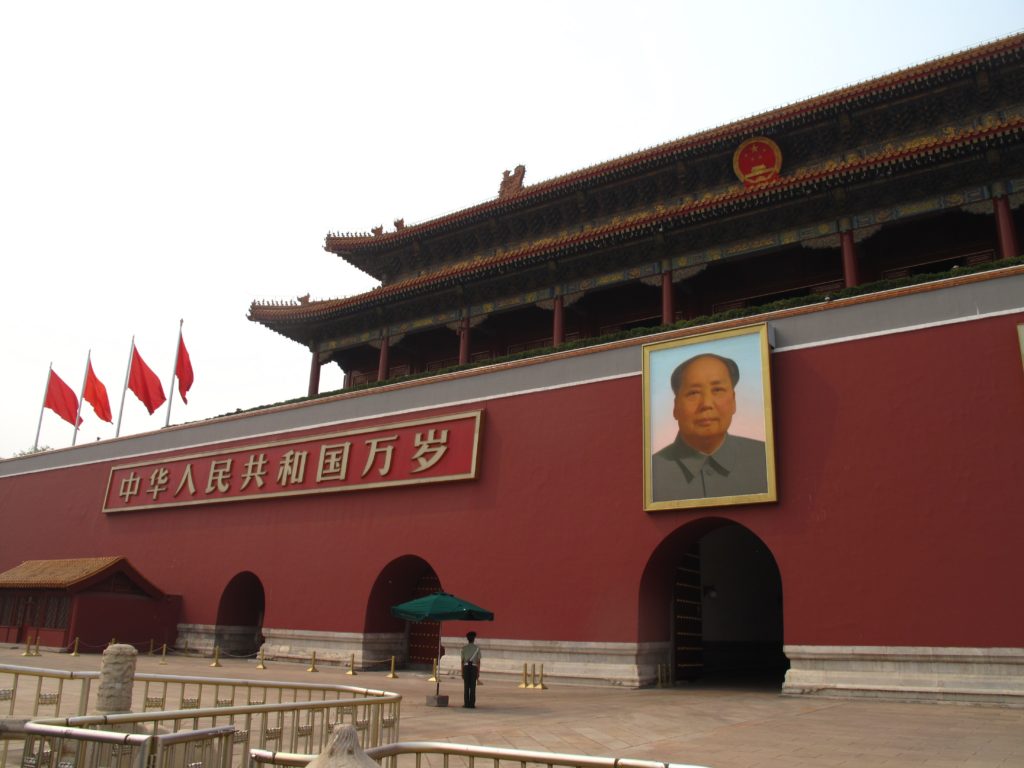
Of course, we hadn’t checked the hours and we were again denied entrance — apparently the Forbidden City is closed on Mondays. We did stop and watch several groups of marching soldiers,

before heading to the nearby “Beijing Working Peoples’ Cultural Palace” instead. This was a mostly-deserted area with nice gardens and temples, inside one of which was an art museum of sorts. One giant section was filled with vivid paintings of ocean and island scenes.
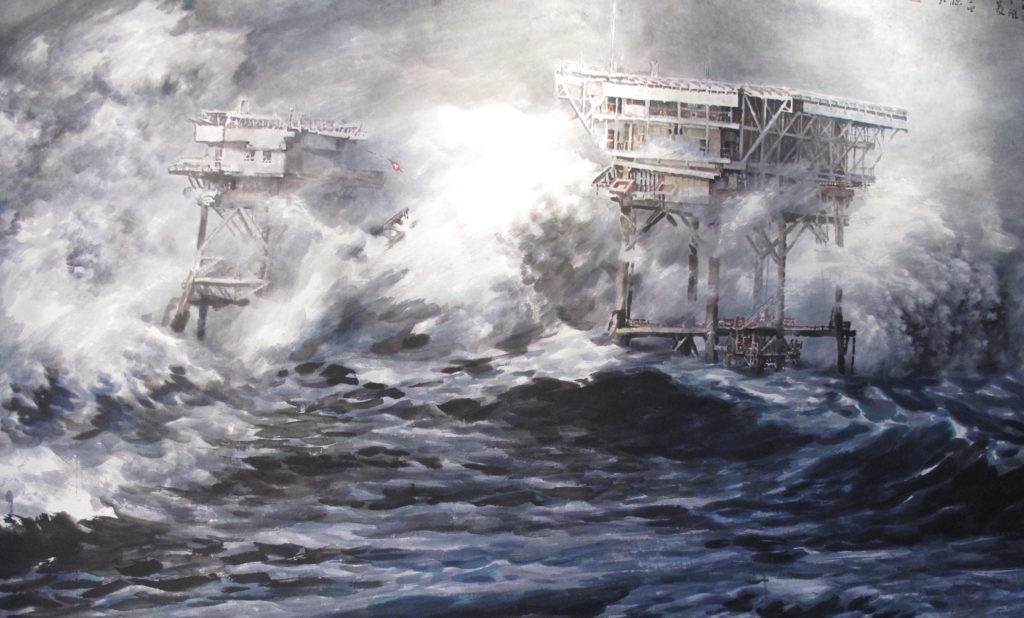
When we got closer and read the captions, they all told different versions of the same story: China’s indisputable ownership of the South China Sea, the evils of conquering imperialists who were occupying the territory, and the (often karmic) punishment they received or deserved as a result. We were pretty stunned at the level of arrogance conveyed in each of the 20 or so paintings.
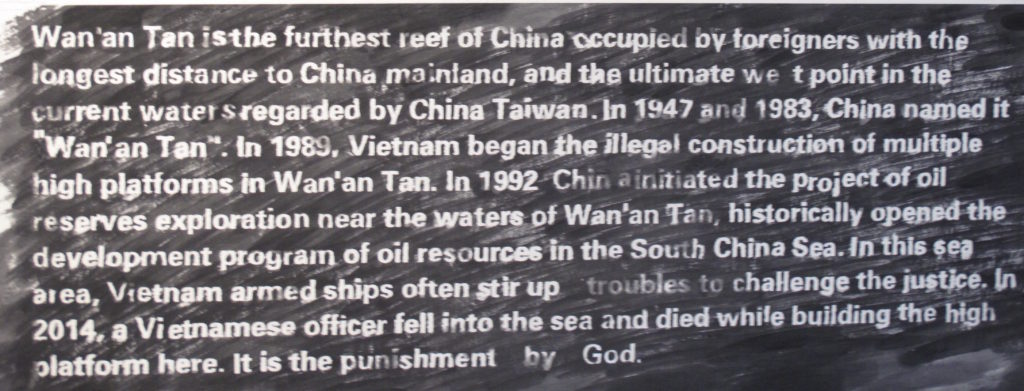
In our remaining break time we explored the Hutongs, narrow alleyways originating in the 13th and 14th century which have been a focus of Beijing culture over the many centuries since. The city center was blanketed by Hutongs until 1950, but most have been bulldozed and rebuilt as wide roads flanked by high-rises in the intervening years. The remaining section we visited to the north of the Forbidden city seemed to be in excellent condition, however — possibly resurfaced in a way that preserved the desired ideological image.

On Jason’s birthday, we visited a cozy retro-video-game-bar in the hutongs called 8-Bit, which was a lot of fun!

Later, we caught up with Jason’s high school friend Ben (they were fellow “Mathletes”) over a giant tower of lamb meat:
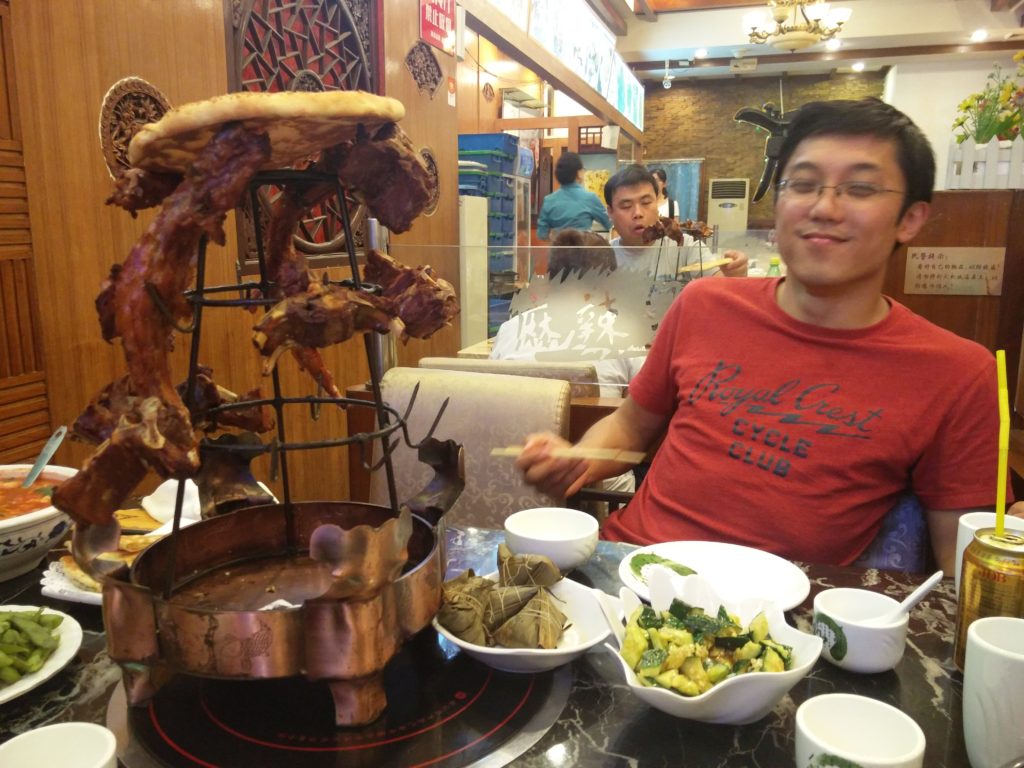
and the next day we hung out in his friend’s tiny cafe and pie shop called “Rager Pie”, where we were surprised by golf-ball-sized hail followed by several feet of water flooding the hutong.
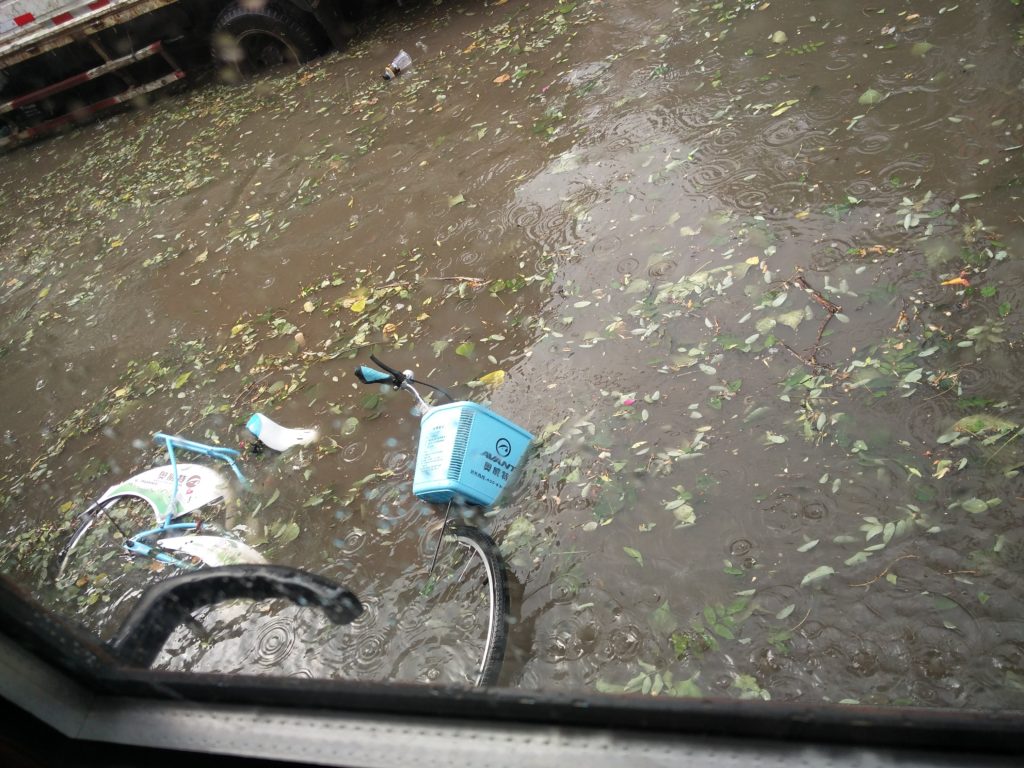
As we waited for the water to drop, several very loyal customers trudged through the thigh-deep water (which had flooded the bathroom across the street –yuck) to get their pie fix. Eventually, the manhole covers were opened, the water cleared, and we enjoyed a mini tour of the many San-Francisco-like hipster microbreweries that have just recently been popping up (which served some of the best beer we’d had in months),
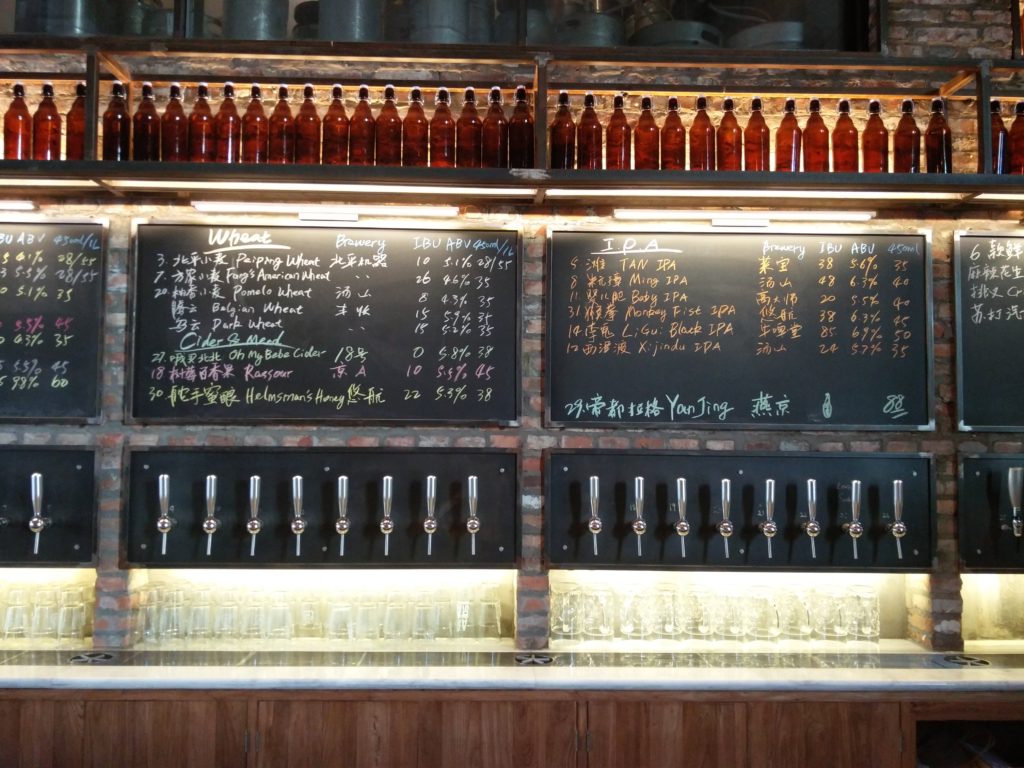
before hopping on the bullet train
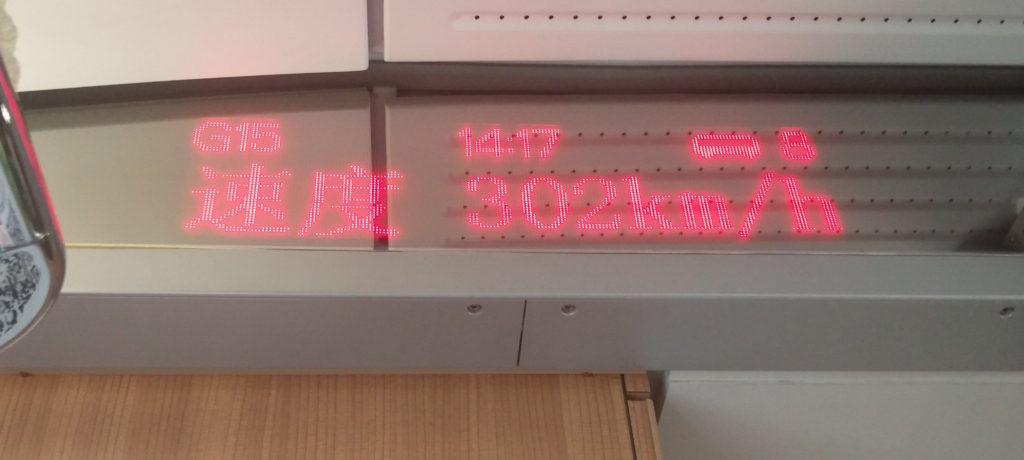
to our next destination – China’s most populous city, Shanghai.
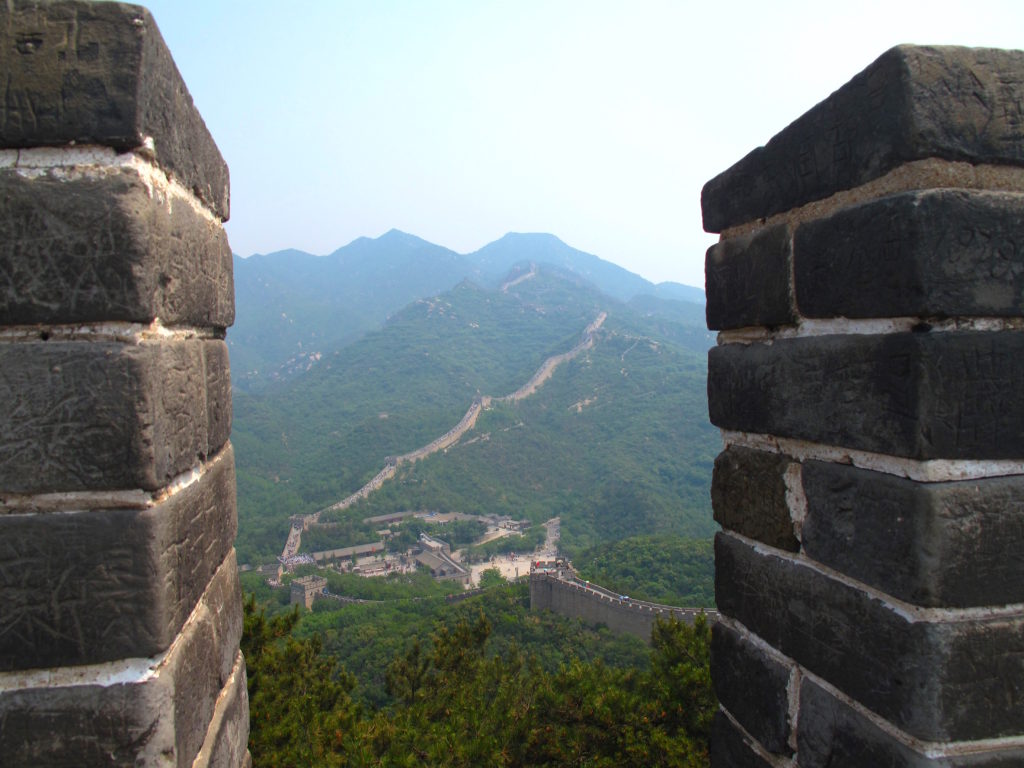
Did you try the Fried Enema??